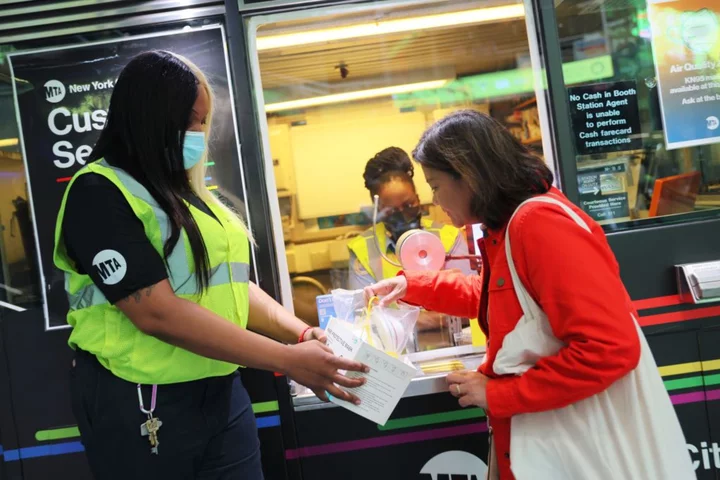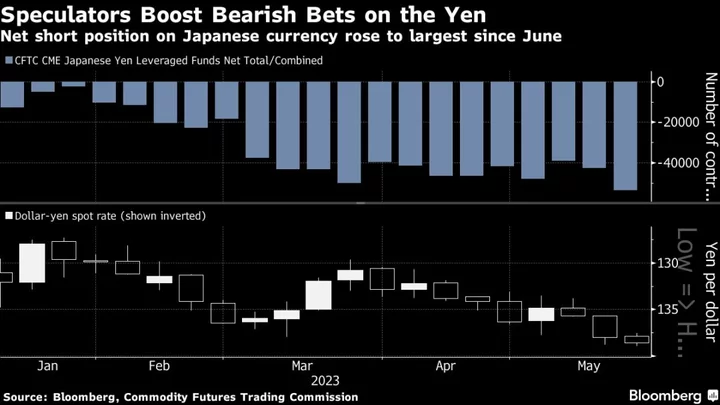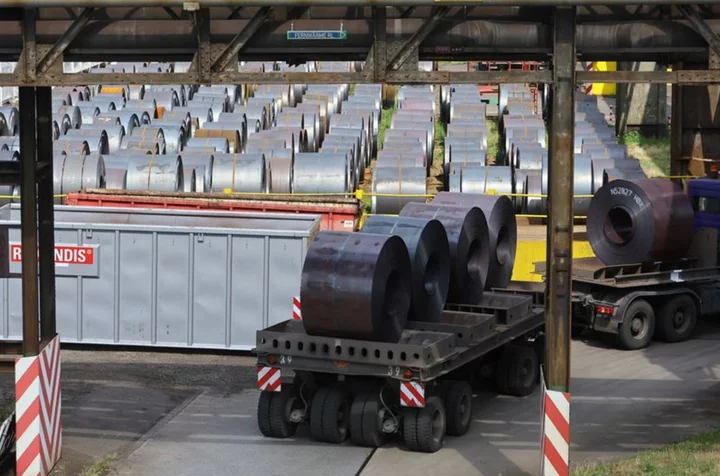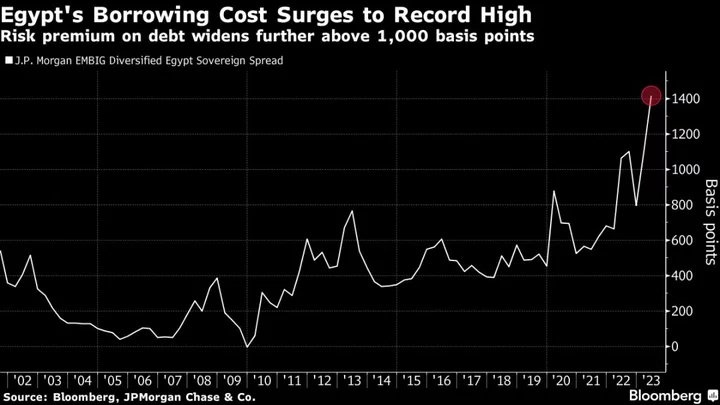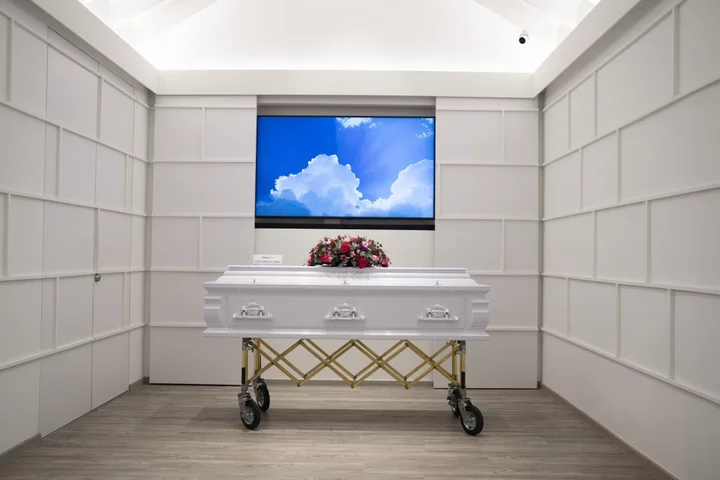Hazardous smoke from wildfires has become a near-annual occurrence on the West Coast since 2017. But the hazy skies and thick burning smell spreading from wildfires burning in Canada are new to many people on the East Coast experiencing their region’s worst-ever air quality.
That includes local officials, many of whom have had to improvise guidelines and measures to protect the public. California and other Western states offer lessons on how to protect public health during unsafe wildfire-smoke episodes.
“We haven’t seen levels like this in decades,” New York City Health Commissioner Ashwin Vasan said during a press briefing on Wednesday evening, when the air quality index peaked at a “hazardous” 484. “We also haven’t seen levels rise this quickly, this suddenly over the last 24 hours, almost ever, because frankly, we don’t get wildfire smoke here in this way like this.”
The city urged residents to limit outdoor activities and switched from in-person classes to remote learning for students, but stopped short of suspending city operations like trash collection.
In Philadelphia, the streets department announced early Thursday it would suspend outdoor operations like recycling collections and road repairs “out of an abundance of caution for employees sensitive to the air pollution,” but officials didn’t decide until the evening to shift schools to virtual learning on Friday.
Compare that with Western states, where such policies are already codified and more familiar, and are often rounded out by other measures.
Wildfire smoke poses a particular threat in the San Francisco Bay Area, where 55% of homes lack air conditioning due to the historically temperate climate. Fires often coincide with heat waves, leaving millions of people, particularly those in low-income neighborhoods, with the choice of either sealing their homes and sweltering or opening windows and exposing their families to dangerous smoke.
Last September, the Bay Area Air Quality Management District opened a “Clean Air Center” in a disadvantaged neighborhood in San Francisco where residents can seek respite from wildfire smoke. It was the first of more than 233 such centers that will open by August in the nine-county Bay Area, which is home to 7 million people.
Under legislation enacted in 2019, the state of California allocated $3 million for the air district to supply portable air filtering equipment or install upgrades to homeless shelters, schools, libraries and other public buildings that can be repurposed as sanctuaries when air quality reaches hazardous levels. Most of the clean air centers are located in low-income areas.
“It’s very important to have those centers open in neighborhoods that are impacted by higher levels of air pollution, and not just during wildfires,” said Erin DeMerritt, an air district spokesperson. “Wildfire smoke can impact our health, not just from short-term exposure but in deeper ways once you’ve been exposed to particulate pollution for a long time.”
The air district has also distributed air filters to low-income Bay Area residents who suffer from respiratory illness.
Similarly, Seattle has opened a network of “clean air shelters” that residents can visit during wildfires that have ravaged the Pacific Northwest in recent years. The Washington State government in 2022 issued detailed guidelines for public health officers and local officials on how to respond to wildfire smoke, including when to close schools, cancel sporting events and open clean air shelters.
On the East Coast, cities do not have dedicated clean air centers already in place, but many said this week they were working with outreach teams to move people to existing shelters and community centers. City workers and contractors were canvassing across New York to distribute masks and water to the homeless and help them find shelter, the social services department told City Limits on Thursday.
In Washington, DC, cooling centers reserved for heat emergencies “can be opened very quickly” if needed, said Christopher Rodriguez, director of the city’s homeland security and emergency management agency. He added that the city’s homeless shelters have been open 24/7 since the beginning of the pandemic. “So we feel that we have a good infrastructure in place to accommodate any residents who might need to go inside, particularly our unhoused populations,” he said.
In Baltimore, where homeless shelters are run by external providers and are usually opened only at night, officials have asked that they remain open during the day as well, said Letitia Dzirasa, the interim deputy mayor of equity, health and human service. The city is working with outreach teams to ensure that they have enough masks to distribute to the unhoused. Agencies have also stocked senior centers with masks.
Dzirasa, who formerly served as Baltimore’s health commissioner, added that although the city hasn’t dealt with such high levels of toxic air from wildfire smoke, its experience with Covid-19 has prepared it to mobilize resources and keep residents updated. “For better or for worse, I think the pandemic offered us a lot of lessons learned, particularly around information dissemination,” she said.
The American Lung Association worked to pass California’s clean air center law. Will Barrett, national senior director of clean air advocacy for the group in Sacramento, said Eastern cities will need to undertake the kind of air quality monitoring and public education efforts about wildfire smoke that are now routine on the West Coast.
Agencies there regularly send out air quality alerts and urge residents to download the US Environmental Protection Agency’s AirNow app to their phones so they can monitor local smoke conditions. In the Bay Area, many residents have installed PurpleAir sensors inside and outside their homes to provide real-time air quality data. Though not as sensitive as the government’s sensors, residential monitoring stations can provide a snapshot of how air quality changes from neighborhood to neighborhood.
“Wildfire smoke is often something you think of as being isolated to the Western United States,” said Barrett. “But increasingly, we’re seeing wildfires, catastrophic hurricanes and flooding events losing their regional trademarks and hitting in more locations and affecting more and more people throughout the country.”

